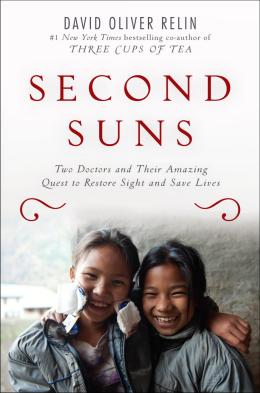
As miracles go, it’s hard to beat making the blind see. Yet that’s exactly what the eye surgeon Dr. Geoffrey Tabin can do. He services poor people in the developing world who have developed cataracts — a clouding of the lens of the eye that is the world’s leading cause of blindness. (The World Health Organization estimates that 18 million people globally are blind because of cataracts.) Cataracts can be treated with a 10-minute surgery, usually well before they lead to significant vision impairment. But in developing nations like Nepal and Ethiopia, where treatment is often unavailable for the poor, cataracts mean blindness — and blindness can mean a death sentence. “They’re blind to the point that they can’t do the acts of daily living,” says Tabin.
That’s where Tabin and his colleagues at the Himalayan Cataract Project (HCP) come in. In assembly-line-like fashion, eye doctors treat cataract victims who would otherwise be unable to afford treatment. The surgery is comparatively simple: the clouded eye lens is removed and then replaced with a synthetic, clear lens. After a few days of recovery, the bandages are removed, and the blind can see. In an interview at TIME’s offices in New York City, Tabin shows me a video he took of a recent surgical trip to Ethiopia. In it, patients who have had their bandages removed after cataract surgery chant and cry in joy. The blind can see. “It’s the craziest miracle in medicine,” says Tabin.
(MORE: Woody Harrelson, Sustainable-Paper Salesman)
It looks something like this:
[youtube=http://www.youtube.com/watch?v=xBRzFRFL1pU]
Tabin was in New York to promote a new book about his work: Second Suns: Two Doctors and Their Amazing Quest to Restore Sight and Save Lives. Written by David Relin — a co-author of the best seller Three Cups of Tea — the book follows Tabin and his colleague Dr. Sanduk Ruit, a brilliant Nepalese doctor who, despite being born in one of the poorest regions of one of the poorest countries in the world, became a ophthalmologist who pioneered a way to bring inexpensive cataract surgery to the poor.
Many people born poor in countries like Nepal who have the talent, fortitude and fortune to become doctors leave their country behind, often emigrating to better-paying jobs in the West. But not Ruit, as Relin makes clear — the Nepalese doctor was determined to make a difference for those who had been left behind in the darkness. Together Tabin and Ruit founded HCP, beginning in Nepal before branching out to other developing nations. Last year HCP performed over 26,000 cataract surgeries to restore sight, while training medical professionals on the ground in Ethiopia and Nepal. Their system is high volume and high efficiency, performing cataract surgeries faster and far cheaper than would be possible back in the U.S. “Dr. Ruit is really the genius behind it,” says Tabin.
But Tabin shouldn’t sell himself short. The Utah-based surgeon seems to be driven by an internal jet engine. A Marshall scholar and longtime mountain climber who deferred admission to Harvard Medical School — something that is not done often — so that he could take part in an expedition to climb Mount Everest, Tabin would be well known just for his alpine adventures, even if eye surgery is technically his main job. He’s one of the few to climb the Seven Summits, the seven tallest mountains in the world. And as Relin makes clear in the excellent Second Suns, it’s Tabin’s relentless energy that drives HCP forward, as the NGO has grown to cover seven countries and 18 eye-care facilities. Tabin’s climbing experience feeds into his ability as a surgeon. “When I’m climbing, the whole world melts away,” he says. “You’re perfecting every motion. And surgery is the same way.” (The difference might be that cataract surgery is even faster — Tabin notes that his record is 102 surgeries in a single day, a pace that would exhaust most surgeons.)
Second Suns is a hopeful work, a profile of two doctors who have dedicated their lives to bringing light to those in darkness. But it does have a sadder side. In November 2012, before the book was published, David Relin took his own life. Basic facts had been called into question about his best seller, Three Cups of Tea, which was co-written with the mountain climber Greg Mortenson. (Mortenson was accused of mismanaging funds that had been earmarked to build schools in Afghanistan and Pakistan.) While no one blamed Relin for the mistakes, the negative publicity must have taken a toll, as did his struggles with depression. “[Relin] took a lot of pride in his writing and his journalism,” says Tabin. “He was really attached to the idea that he could make a difference in the world through his journalism.”
Second Suns will bring much needed attention to the Himalayan Cataract Project. Blindness from cataracts is completely treatable — it’s just a matter of will and money. Ruit and Tabin have the former, and if Second Suns helps bring in more of the latter — which it should — there will be no doubt that Relin did make a difference.
MORE: As New York’s Bike Share Fixes Failures, It Needs to Cope With Success


